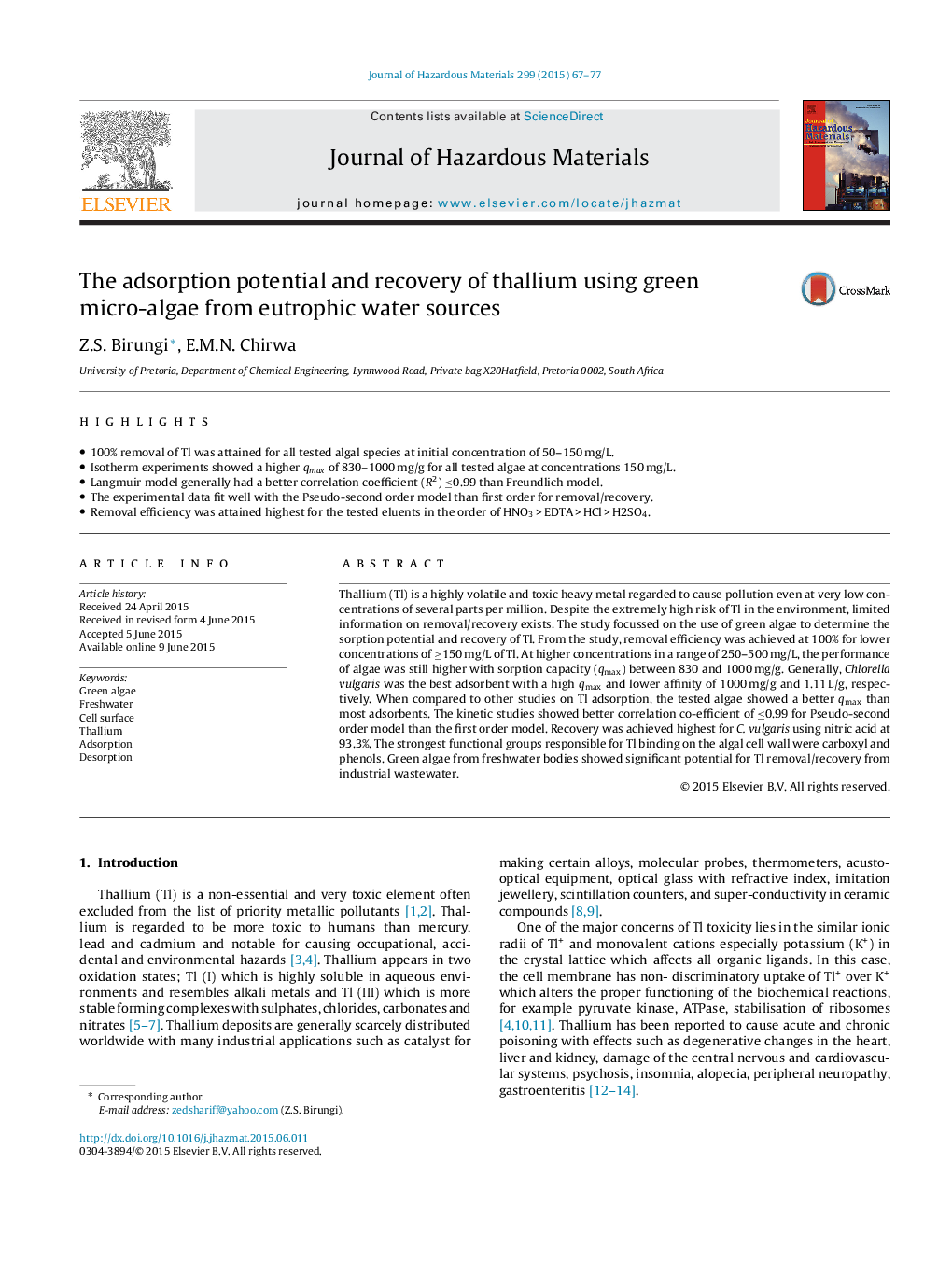| Article ID | Journal | Published Year | Pages | File Type |
|---|---|---|---|---|
| 575902 | Journal of Hazardous Materials | 2015 | 11 Pages |
Abstract
Thallium (Tl) is a highly volatile and toxic heavy metal regarded to cause pollution even at very low concentrations of several parts per million. Despite the extremely high risk of Tl in the environment, limited information on removal/recovery exists. The study focussed on the use of green algae to determine the sorption potential and recovery of Tl. From the study, removal efficiency was achieved at 100% for lower concentrations of â¥150 mg/L of Tl. At higher concentrations in a range of 250-500 mg/L, the performance of algae was still higher with sorption capacity (qmax) between 830 and 1000 mg/g. Generally, Chlorella vulgaris was the best adsorbent with a high qmax and lower affinity of 1000 mg/g and 1.11 L/g, respectively. When compared to other studies on Tl adsorption, the tested algae showed a better qmax than most adsorbents. The kinetic studies showed better correlation co-efficient of â¤0.99 for Pseudo-second order model than the first order model. Recovery was achieved highest for C. vulgaris using nitric acid at 93.3%. The strongest functional groups responsible for Tl binding on the algal cell wall were carboxyl and phenols. Green algae from freshwater bodies showed significant potential for Tl removal/recovery from industrial wastewater.
Related Topics
Physical Sciences and Engineering
Chemical Engineering
Chemical Health and Safety
Authors
Z.S. Birungi, E.M.N. Chirwa,
